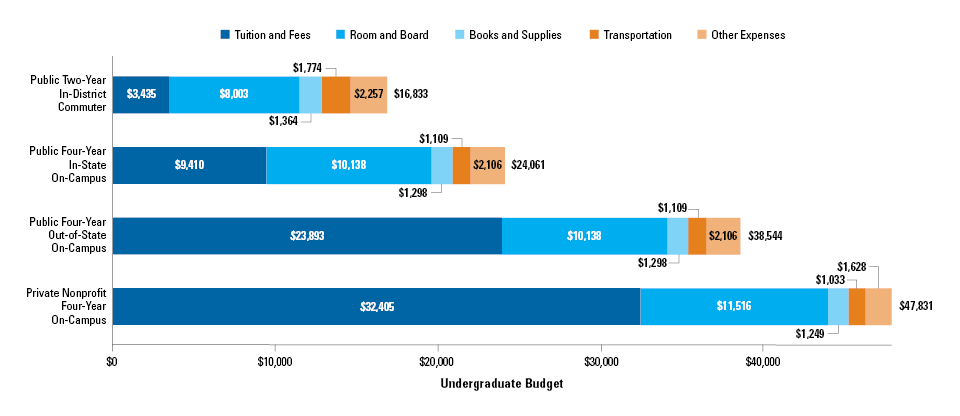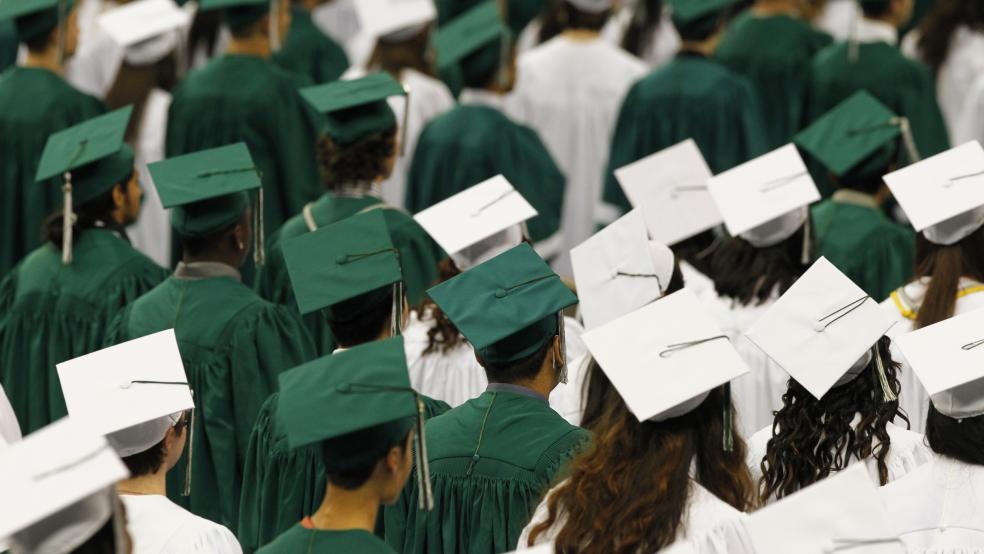Now that a few weeks have passed since National College Decision Day, the elation (and relief) of finally committing to a school may be wearing off. You probably already calculated the financial aid packages offered by your chosen school and have found a way to make it work financially.
Now that you’ve sent in your deposit, though, it’s time to work on your college “operating” budget for the next few years. That entails income from scholarships, loans, work and other money and expenses including tuition, room and board, and a host of other charges you might not have included.
Related: Bernie Sanders’ Free College Tuition Boondoggle
Attending a four-year public school as an in-state student this year costs nearly $20,000, and it costs more than twice that to go to a private college. It’s easy to see why the average student graduates almost $30,000 in debt -- and that doesn’t even factor in increasingly common parent loans.
Last year, parents paid for about a third of students’ college bills from income and savings, according to Sallie Mae, while student and parent borrowing made up another 22 percent. Smart budgeting now can ensure that you borrow as little as possible to reduce the amount you’ll have to pay back after school (and reduce the temptation to spend unneeded loans).

Average Estimated Full-Time Undergraduate Budgets 2015-16- Source: College Board
To figure out how much you’ll need, it’s important to factor in some of the hidden costs that creep up on students and their families. Here are a few biggies to watch out for:
The true cost of living. All schools must factor the cost of living into the net price calculators used to determine your financial aid, and used by many families in planning for college. Problem is, there’s no standard method of determining cost of living, and many schools drastically underestimate that cost. Up to a third of colleges use a cost of living allowance that’s at least 20 percent below the actual cost of living in their geographic region, according to a recent report by The Century Foundation.
Your social life. Joining a fraternity or sorority while away at school can will cost a few hundred dollars in dues, and that’s before the extra money spent on formals and fundraisers. Even if you don’t go Greek, students often spent more than expected on things like eating outside of the dining halls, attending concerts or sporting events, or enjoying Spring Break or other trips with friends.
Students at urban schools have more options when it comes to off-campus activities, but they often face higher costs to take advantage of them. There’s also increased pressure at some of the pricier schools to spend money to project the right appearance and fit in with the student body, says Jamie Dickenson, author of Too Smart for the Ivy League: How to Give Your Kids the Best College Education for the Least Amount of Money. “Just keeping up with the Joneses in terms of clothing and electronics is a factor that people need to discuss with their kids before the kids leave to go away to school,” she says.
Related: Clinton’s $350 Billion College Tuition Plan Built on Rosy Assumptions
The fees associated with your major. The fees that every student must pay for things like library services and the student union are generally calculated in the official net price calculator. However, not all calculators factor in the additional fees paid for specific courses or majors. Some schools charge students to take classes online, and others levy fees for placement exams that must be taken before registration. Some majors, such as nursing, business, or engineering, have particularly high fees associated with equipment, lab use, or supplies. Fees for pre-nursing students, for example, included charges for vaccinations, lab works, and physicals, and totaled more than $400, according to the Century Foundation Report.
Transportation and parking. For those who don’t live on campus, the cost of maintaining a car or paying for public transportation throughout the year can add up quickly. Transportation also become an added expense for students whose families live far away, since the cost of students and visiting family members flying to and from school several times a year can add up quickly.
Your financial aid package may not cover as much in future years. Many schools front-load financial aid packages, meaning that they offer their best packages to freshman, and often scale back the packages in future years or shift the mix of aid from grants to loans, which need to be paid back. In addition, students who receive a specific dollar amount of merit aid may need to make up a larger sum of money in subsequent years if scholarships are not set up to increase alongside rising tuition. The average freshman received an aid package that discounted the published tuition rate at his school by 48 percent, but the discount for all students was just 41.6 percent, according to a report published last year by the National Association of College and University Business Officers.
Related: Pell Grants Cost Billions, but Many Recipients Fail to Graduate
You don’t finish in four years (or at all). While most families budget for their students to complete college within four years, fewer than 40 percent actually do, according to the National Center for Education Statistics. About 55 percent take 5 years to finish their degree, and 40 percent still haven’t graduated after six years of school.
Health care. All college students must have health insurance or pay an Obamacare penalty. There are several options available, including buying a plan through school, staying on your parents’ plan, or buying a plan on your own via the Obamacare marketplaces. The average premium for consumers age 18-24 is about $160, according to eHealth, but the lower cost plans could carry higher out-of-pocket costs.
There are also other health-related costs that may not be covered by insurance, such as mental health services, which are increasingly used by college students who have trouble adapting to life away from helicopter parents, says Daniel Riseman, founder of Riseman Educational Consulting in Westchester County, N.Y. “The school’s mental health clinics are overwhelmed, and suddenly parents are spending an extra $1,000 a month on a psychologist,” he says. “That’s a reality that parents should be aware of.”





